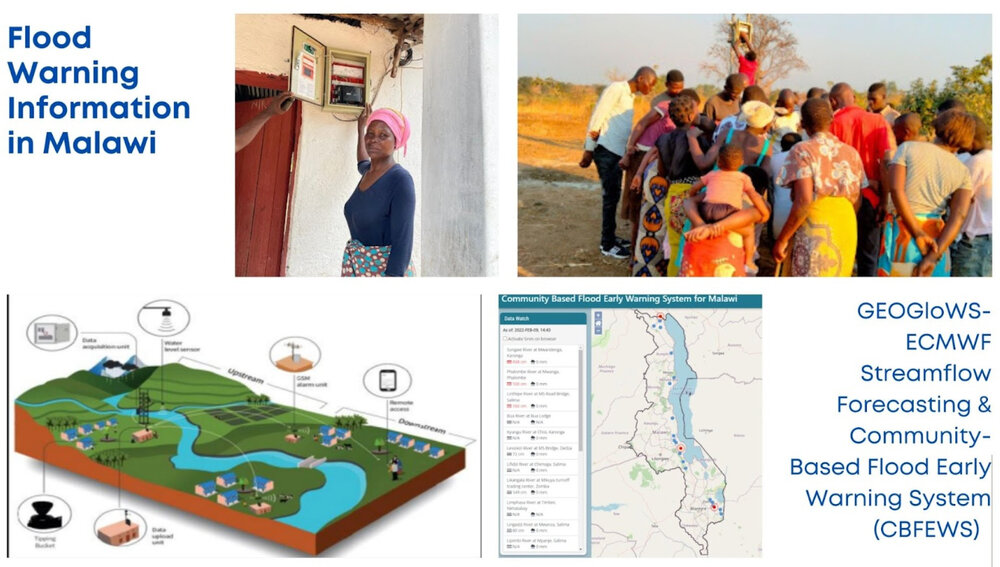Integration of GEOGloWS-ECMWF Streamflow Forecasting into the Community-Based Flood Early Warning System (CBFEWS): flood warning information in Malawi.

Summary
In January 2022, Cyclone Ana hit Malawi, which caused severe flooding across the country. Thanks to resources that included the GEOGloWS-ECMWF streamflow forecast service deployment and in cooperation with local authorities and international partners, losses and damages were limited.
Malawi, one of the least developed countries in Africa, is highly dependent on its agricultural sector. About 85 percent of the country’s population lives in rural areas and primarily depends on smallholder farming as their source of livelihood. Flood occurrences in these areas are increasing in frequency, extent, and intensity. In January 2022, Cyclone Ana struck the Southern and Central Districts of Malawi, bringing strong winds and rains to an area already suffering from floods due to the ongoing rainy season. According to the Malawian government's Department of Disaster Management Affairs (DoDMA), 37 people were reported dead, 22 missing, and 158 injured as of 31 January 2022. The flooding affected over 193,558 households and destroyed more than 740 hectares of croplands, pushing the already vulnerable communities into food insecurity in the coming months.
To support the government's efforts to expand the use of Modernized Climate Information and Early Warning systems (M-CLIMES), the Regional Centre for Mapping of Resources for Development (RCMRD), with financial support from the United Nations Development Programme (UNDP), partnered with the International Centre for Integrated Mountain Development (ICIMOD) and the Sustainable Eco Engineering Pvt. Ltd (SEE) of Nepal to establish an operational hybrid flood forecasting system using telemetry data from 21 river stations and the GEOGloWS-ECMWF streamflow forecast (bias-corrected) for the eight flood-prone districts. GEOGloWS implementation has increased the warning lead time from hours to 15 days and complements the telemetric sensors during the downtime period. This capability enhances community preparedness and leads to early action that significantly reduces the flood disaster risks, as demonstrated during Cyclone Ana. The project has been implemented in close collaboration with local institutions such as the Department of Management Affairs (DoDMA), the Department of Water Resources (DWR), the Department of Climate Change and Meteorological Services (DCCMS), and the Malawi Red Cross Society (MRCS).
You can read the full report here.